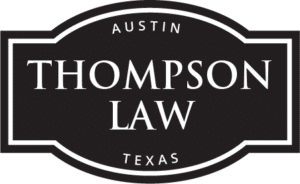A Texas CPS case can get quite complicated, especially when it occurs alongside a divorce. By now, you should have been contacted by CPS (typically by phone) which means you need to place a call to an experienced CPS attorney immediately. They will work with you through all this entire process and give you the right path to take based on the unique details of your situation.
Here are some critical variables to keep in mind as the case moves forward.
Statewide Intake specialists classify cases based on the severity of the alleged abuse or neglect.
Priority One Intake (P1) cases are the highest priority, alleging immediate risk of abuse or neglect that could result in death or serious bodily injury. The case is sent to the Investigation (INV) Unit, and a CPS Investigator responds immediately if there’s imminent risk of death or serious bodily injury, and within 24 hours if not.
The Investigation Unit is responsible for making a decision about what they believe happened (whether abuse or neglect occurred based on a preponderance of the evidence standard) and a risk assessment (likelihood that abuse or neglect will occur in the future).
A Priority Two Intake (P2) report alleges that a child is at risk of harm, but not death or serious bodily injury. The case is assigned to either the Investigation Unit (INV) or Alternative Response Unit (AR).
In the Alternative Response Unit (AR), there is no investigation or substantiation of allegations, only short-term engagement with families. Only Priority Two (P2) cases are eligible for placement in the Alternative Response Unit.
In Priority None (PN) reports, there is alleged past abuse or neglect. These are situations that don’t appear to involve a foreseeable risk of harm in the future and can sometimes be too vague or have missing information. CPS closes this type of report as soon as CPS receives it.
If a report of child abuse or neglect falls within one of the following categories, then a case is opened and an investigation begins.
Abuse: emotional abuse, labor trafficking, physical abuse, sex trafficking, or sexual abuse
Neglect: Abandonment, neglectful supervision, medical neglect, physical neglect, or refusal to assume parental responsibilities
Safety Plan: CPS may take steps to ensure the protection of the child while the investigation is ongoing.
In a safety plan, there’s an agreement between CPS and the parent(s) to take specific action and/or control the risk of danger to the child, including a parent agreeing to voluntarily limit the exercise of parental rights (e.g., custody, visitation). A Parental Child Safety Placement (PCSP) constitutes an agreement between CPS and the parent(s) to place the child outside the parent’s home on a temporary basis with relatives or family friends (“fictive kin”) to avoid an Emergency Removal. CPS may seek a Temporary Restraining Order (TRO) against a parent on behalf of the child (e.g., removal of parent from child’s home). The department also may seek a Protective Order (PO) against a parent on behalf of the child, or assist the parent seeking a PO against the other parent on behalf of child.
The two key components in the investigation phase are disposition and risk assessment.
Disposition is backward looking, and for each allegation, makes the determination whether or not child abuse or neglect occurred. Preponderance of the evidence is the legal standard. Applying the facts of each case to that legal standard, CPS will make one of several different findings.
If CPS makes a “Reason to Believe” (RTB) finding, CPS believes that abuse or neglect occurred by the alleged perpetrator, and the case remains open.
In a “Ruled Out” finding, it is deemed reasonable to conclude that either abuse or neglect did not occur or was not committed by the alleged perpetrator (reasonable person test). So, the case is closed.
An “Unable to Complete” (UTC) finding results when the investigation cannot be concluded because the accused cannot be located or refused to cooperate. Abuse or neglect is unconfirmed, and so the case is closed.
In an “Unable to Determine” (UTD) finding, there is not enough evidence to show that abuse has occurred (preponderance standard), but it would not be reasonable to rule out abuse (reasonable person test). However, since abuse or neglect is unconfirmed, the case is still closed.
Finally, in an “Administrative Closure”, CPS intervention is deemed unwarranted due to new information that either refutes allegations of abuse or neglect or shows that the children “appear to be safe from abuse and neglect or the risk thereof”.
The Risk Assessment is forward looking and determines whether child abuse or neglect is likely to occur in the future. CPS Investigators uses the Risk Assessment Tool, which is an online questionnaire that spits out one of two outcomes. In a “Not at Risk” finding, no risk of continued harm to the child is found to exist, and the case is closed. An “at Risk” finding determines that the risk of continued harm to the child does exist, and the case proceeds to the Administrative Review of Investigative Findings (ARIF) and/or CPS litigation.
In an Administrative Review of Investigative Findings (ARIF), the purpose is to challenge the RTB finding.
The request for an Administrative Review of Investigative Findings (ARIF) hearing must be made within 45 days after receiving notice of the RTB disposition and before a court issues a ruling consistent with the RTB finding.
RTB dispositions are reviewed under the preponderance of the evidence standard. Either the RTB finding will be upheld, it will be reversed to a Ruled Out finding, or it will be reversed to a UTD finding.
If there is an immediate danger to the child’s welfare, the state can remove them from the home.
The state can take possession of children with a court order, or without one if CPS deems it an emergency situation.
In an emergency hearing, the department petitions for an order to remove the child from the home (before or after the actual removal).
This must occur within one business day after removal of child from home, with exceptions. There must be evidence for continuing danger, plus reasonable efforts to prevent or eliminate the need for removal. If the court issues an order that the child be returned to (or to remain in) the home, then either the case is closed or a Family-Based Safety Services case is opened. Or, the court can grant CPS Temporary Managing Conservatorship (TMC), which means that CPS temporarily assumes many of the parental rights.
Next comes a Show Cause (or full adversary) hearing.
The hearing’s purpose is to challenge the removal of the child from the home and must occur within fourteen days of the Emergency Hearing, with exceptions. At a hearing of this type, CPS must prove:
- danger to the physical health or safety of the child was caused by an act or failure to act;
- It is contrary to the welfare of the child to remain in the home;
- the urgent need for protection required the immediate removal of the child from the home;
- reasonable efforts were made to eliminate or prevent the child’s removal; and
- reasonable efforts have been made to enable the child to return home, but there is a substantial risk of a continuing danger.
If these requirements are not satisfied, then the case is closed. If they are, then CPS’ removal of the child is approved and (most often) continued into the future. Or, even if the Court agrees that CPS’ removal of the children from the home was justified, the Court may nevertheless order the return of the children as well as family reunification services.
In a Court Ordered Services case, a Status Hearing must then take place.
The Department is required to file a Family Service Plan and as well as a Visitation Plan before the first Status Hearing. This is when the Court reviews and amends and/or approves the Service Plan, which lists the services a parent must complete in order for child to be returned home. These services might include parenting courses, individual therapy, drug counseling, or any other services that address CPS’ concerns. The Status hearing must occur within 60 days after the Court awards Temporary Managing Conservatorship (TMC) to CPS.
If aggravated circumstances exist in a termination case, then it may accelerate to trial.
In the most serious cases, such as ones involving the death of a child, serious injury to a child, or sexual abuse, for example, a Family Service Plan is not required, nor is a Status Hearing. Reasonable efforts to return the child are also not required; instead, the case may proceed straight to trial, with CPS seeking to permanently terminate the parent’s parental rights.
Family-Based Safety Services Cases are considerably less complicated.
Here, the child remains in the family home while the CPS case is ongoing. There is no court case filed and no court intervention. The parent simply voluntarily completes the specific services listed in the Family Service Plan in order for the case to be closed.
In Court Ordered Services and Termination cases, several Permanency Hearings may then be held.
The purpose here is to review the Family Service Plan and the parent’s progress toward completion of the court-ordered services. The terms for possession, visitation, and placement, as well as the service plan, are modified as needed.
The initial Permanency Hearing must occur within 180 days after the order granting the Department Temporary Managing Conservatorship of the children. Subsequent Permanency Hearings must also be held at least once every 120 days thereafter.
The possible court findings and orders may be to continue the case and set another Permanency Hearing (as in a Court Ordered Services case), continue the case and set a final trial (as in a Termination case), continue the case and order a Monitored Return (the children are returned to the home and CPS monitors the situation), or to return the child home after completion of services. If needed, Special Settings may be held in order to resolve any issues that cannot wait until the next scheduled Permanency Hearing.
The case concludes with a dismissal, agreed resolution, or final trial
If a parent successfully completes all (or most) of the services that the parent is ordered to complete in a Court Ordered Services case, then the case is typically dismissed.
If a parent does not complete services, or Aggravated Circumstances exist, then a trial must occur within one year after the order granting CPS Temporary Managing Conservatorship (TMC), with exceptions, and the case proceeds to final trial. In a trial where CPS is seeking to terminate parental rights, there must be “Clear and Convincing Evidence” of a ground for termination (abuse or neglect) and proof that termination is in the child’s best interest.
Possible court orders after a final trial include: the children are returned to the parents (case closed); a relative is appointed Permanent Managing Conservator and parental rights are terminated (case closed); CPS is appointed Permanent Managing Conservatorship, parental rights are terminated, and CPS coordinates for the child to be adopted; or CPS is granted Permanent Managing Conservatorship, parental rights are terminated, and the child remains in foster care.
If you are involved in both CPS and divorce cases, an experienced CPS and divorce attorney can help you navigate these potential minefields and protect your children and parental rights.



